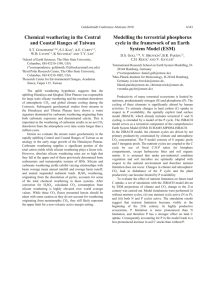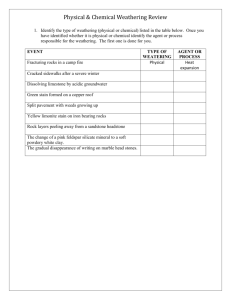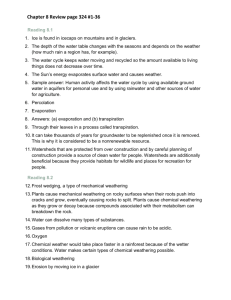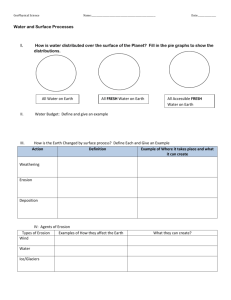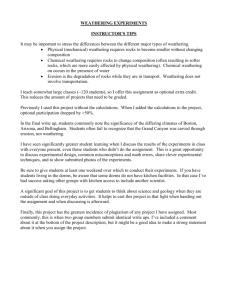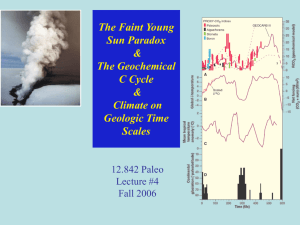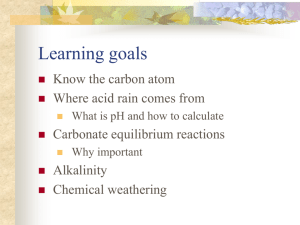2 Center of Modern Analysis, Nanjing University, Nanjing 210093
advertisement
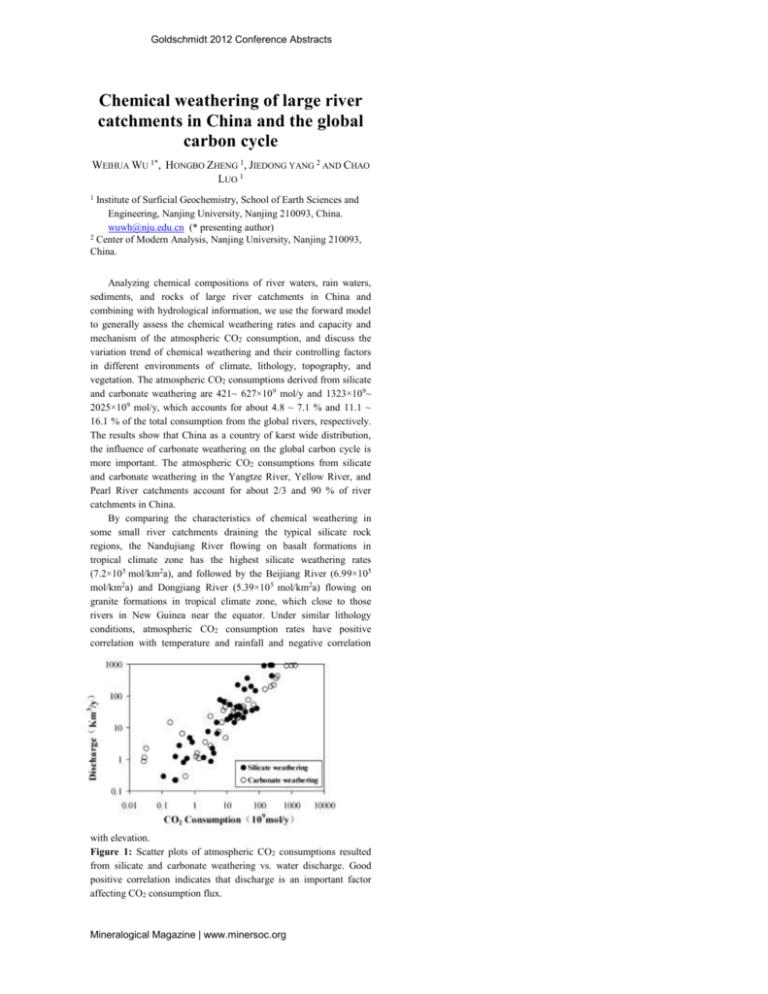
Goldschmidt 2012 Conference Abstracts Chemical weathering of large river catchments in China and the global carbon cycle WEIHUA WU 1*, HONGBO ZHENG 1, JIEDONG YANG 2 AND CHAO LUO 1 1 Institute of Surficial Geochemistry, School of Earth Sciences and Engineering, Nanjing University, Nanjing 210093, China. wuwh@nju.edu.cn (* presenting author) 2 Center of Modern Analysis, Nanjing University, Nanjing 210093, China. Analyzing chemical compositions of river waters, rain waters, sediments, and rocks of large river catchments in China and combining with hydrological information, we use the forward model to generally assess the chemical weathering rates and capacity and mechanism of the atmospheric CO2 consumption, and discuss the variation trend of chemical weathering and their controlling factors in different environments of climate, lithology, topography, and vegetation. The atmospheric CO2 consumptions derived from silicate and carbonate weathering are 421~ 627×10 9 mol/y and 1323×109~ 2025×109 mol/y, which accounts for about 4.8 ~ 7.1 % and 11.1 ~ 16.1 % of the total consumption from the global rivers, respectively. The results show that China as a country of karst wide distribution, the influence of carbonate weathering on the global carbon cycle is more important. The atmospheric CO2 consumptions from silicate and carbonate weathering in the Yangtze River, Yellow River, and Pearl River catchments account for about 2/3 and 90 % of river catchments in China. By comparing the characteristics of chemical weathering in some small river catchments draining the typical silicate rock regions, the Nandujiang River flowing on basalt formations in tropical climate zone has the highest silicate weathering rates (7.2×105 mol/km2a), and followed by the Beijiang River (6.99×105 mol/km2a) and Dongjiang River (5.39×10 5 mol/km2a) flowing on granite formations in tropical climate zone, which close to those rivers in New Guinea near the equator. Under similar lithology conditions, atmospheric CO2 consumption rates have positive correlation with temperature and rainfall and negative correlation with elevation. Figure 1: Scatter plots of atmospheric CO2 consumptions resulted from silicate and carbonate weathering vs. water discharge. Good positive correlation indicates that discharge is an important factor affecting CO2 consumption flux. Mineralogical Magazine | www.minersoc.org

